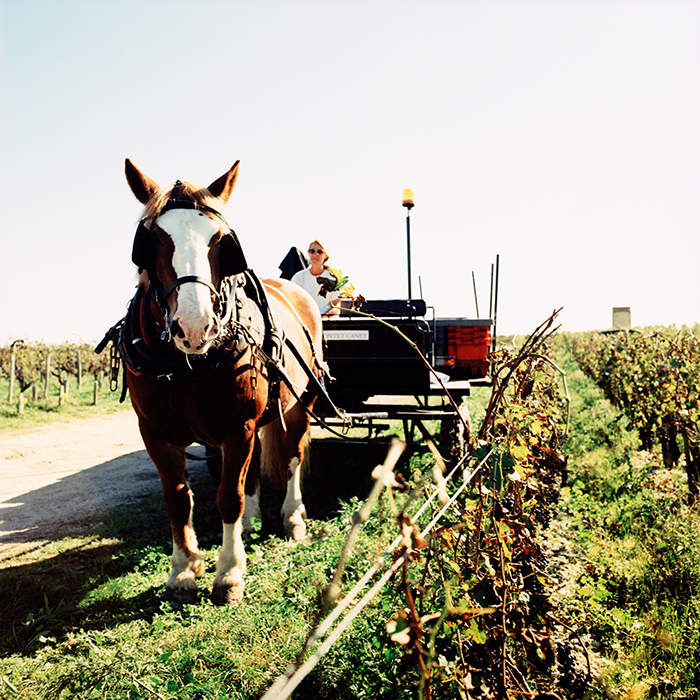The language of sustainability: the top 10 terms to know
Author: Sophie Thorpe

THE BASICS
Organic: the focus here is mainly in the vineyard, improving soil health and avoiding man-made/industrial elements – using compost rather than fertilizer, and not spraying vines with fungicides or herbicides. Producers can use sulphur and copper – as these are naturally occurring elements – to protect vines from disease. Various bodies offer certification.
Biodynamic: this is the school of Rudolf Steiner (who also is behind the eponymous education system). The key principal is that a vineyard should be its own self-regulating ecosystem. Producers have to treat vineyards with biodynamic “preparations” at certain points in the year, and farming is done in accordance with the biodynamic calendar, which reflects the lunar cycle. Various bodies offer certification.
Sustainable: not strictly regulated, sustainable practices look beyond the winery and vineyard, aiming to reduce the impact of today’s actions on the farmers of tomorrow – by, for example, having a responsible approach to water and electricity usage, protecting biodiversity, as well as having a long-term view when it comes to vineyard and soil health.
Natural: very fashionable, “natural” is a diaphanous term that isn’t legally defined, and can be bandied around at will. Those using the term are often – but not always – producers operating on the fringe of what’s possible, making wine with minimal intervention – think minimal technology in the vineyard and winery, native yeasts for ferments, neutral oak and little-to-no added sulphur.
Low intervention: this is not dissimilar to “natural”, in that it is not legally defined, however many producers favour “low” or “minimal intervention” over “natural” feeling that it is a more accurate reflection of how they work – reducing the influence of man in the winemaking process, but not removing it entirely.
FOR EXTRA CREDIT
Irrigation: water is an increasingly valuable resource and therefore irrigation – which has become common in many winemaking regions – is now under scrutiny. Some regions require irrigation to produce wine, as otherwise the climate would be too dry for vines to grow. Many high-end producers champion dry-farming (ie farming their vines without irrigation), which they argue produces higher-quality wines. This is much easier if you have mature vines with deep roots. In most of Europe, irrigation is banned for quality wine.
Sulphur: another hot topic, sulphites are a common by-product in alcoholic fermentation, so will almost always be present in wine in small quantities. Winemakers can also spray sulphur on vines to prevent disease and add sulphur dioxide during the winemaking process to preserve wine, ensuring that a wine reaches consumers tasting as it should (consider that the wine may be shipped halfway round the world). Sulphur – in its various forms – is one of the few substances that is permitted within organics and biodynamics. Many attribute hangovers to sulphites in wine, however scientists have proven the two are not related.
Herbicides and pesticides: these are substances used to kill diseases or pests that would damage the vine. Often made from fairly toxic chemicals, use of herbicides and pesticides is limited to specific sprays made from naturally occurring substances for organic or biodynamic wine production.
Natural yeast: otherwise known as native, indigenous or ambient yeast, this is the yeast that naturally occurs on grape skins. Winemakers can either use these yeasts or inoculate with a cultured yeast (this would be added by the winemaker to the grape juice). Cultured yeasts can be neutral or a carefully selected strain that is designed to accentuate certain flavours or aromas, but they guarantee fermentation will run smoothly. There is a risk with natural yeast that a ferment can become “stuck” (ie not complete), which can be detrimental to the wine’s quality. Some suggest that native yeasts engender complexity and are part of any given terroir.
Copper: copper is a component in many fungicides. Bordeaux mixture – a much-used remedy to control downy mildew – has copper sulphate as one of its main components. Copper, alongside sulphur, is one of the few chemicals permitted within organics and biodynamics – although it can be toxic to most plants in higher quantities. A heavy metal, copper is seen by many producers as problematic, having a long-lasting impact on plants and soils.



[…] Source: blog.bbr.com […]